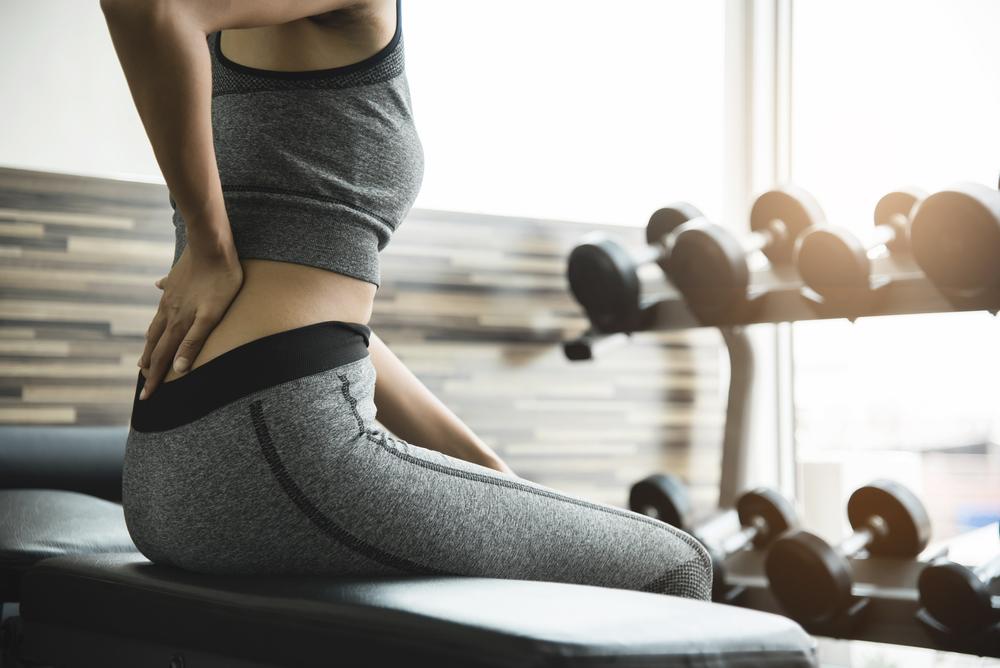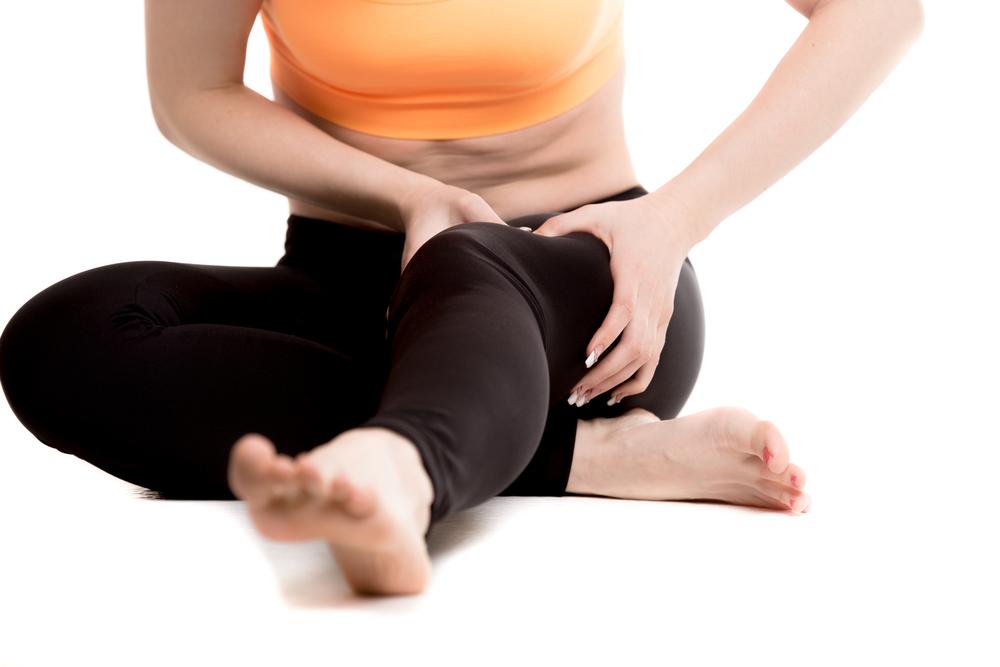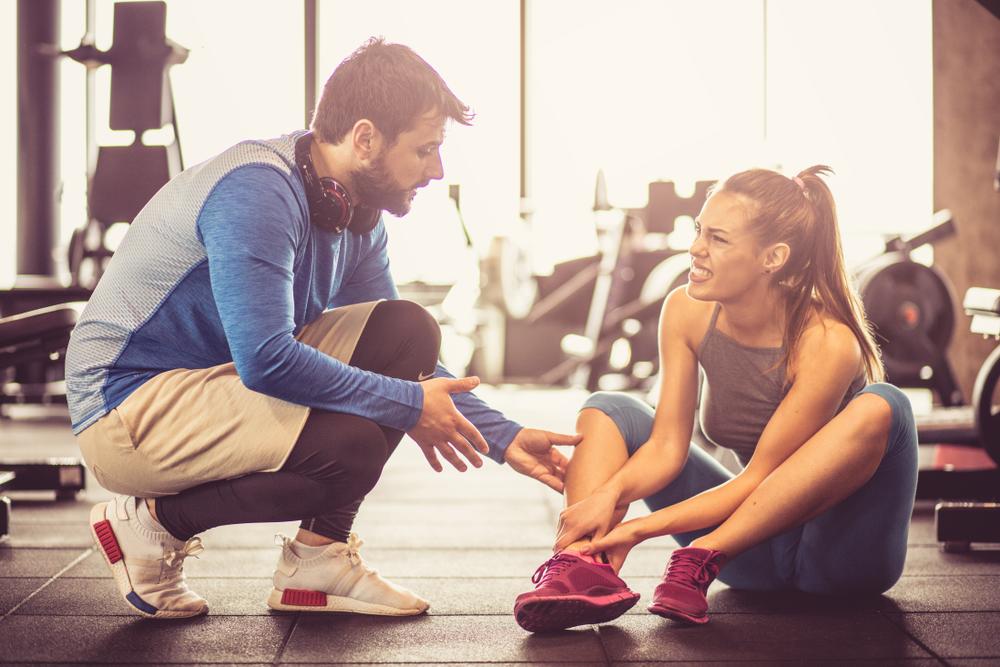How to Make the Most of Your Workouts While Keeping Them Injury-Free
For those who are avid exercisers, sustaining an injury when working out may simply seem like a commonplace side effect of being active. It’s true that sports injuries are quite common – the most common of which include ankle sprains, groin pulls, strained hamstrings, shin splints, knee injuries, and tennis elbow (Hoffman, 2008). However, exercise injuries can be painful and lead to more harmful problems if left untreated. Learning how injuries occur, as well as the best ways to treat them, are important for all active individuals.
How Do Injuries Occur?

Furthermore, injuries can happen to anyone, irrespective of their age, experience or fitness level. They can occur as a result of error in technique, such as when you don’t have proper form and overload certain muscles (Mayo Clinic, 2019). Another way in which an injury can occur is due to training errors, like when you begin an exercise regimen too quickly and your body is not used to it – for that reason, you should ease into an exercise routine slowly.
For new clients just starting to work out and wanting to get the most out of their workouts while also preventing injury, Los Angeles-based dance and fitness instructor Myra Joy Veluz, MFA, recommends listening to your instructor both with your eyes and ears.
“If you see your instructor is doing something you know that your body can’t handle, make modifications,” says Veluz. “For exercises like spin, a lot of people are concerned with their lower back. Every time I’ve gone to a spin class, I’ve heard the instructor give verbal modifications for how to be more comfortable on the bike.”
Modifying traditional poses or workouts in a way that is more beneficial to your body is a great way to still stay involved and engaged in a class or at the gym, but in a way that doesn’t strain your body.
For example, I have been doing some form of exercise that incorporates isometric movements – think workouts like Pilates and barre – for more than a decade. Since I know my wrists are sensitive to putting too much weight on them, I will always modify a wrist-intensive workout in a way that allows me to get the essence of the movement without putting undue strain on my wrists. Most instructors are willing to work with you to think about ways to modify workouts to accommodate your body.
Finally, maintaining correct form is crucial. For workouts like barre, Veluz also recommends learning the difference between effectively holding a position, versus simply mimicking what your instructor is doing. Holding a position deliberately will make it feel more difficult and actually work the intended muscle groups better.
“It’s about being mindful of how you’re holding the pose,” she adds.
Types of Injuries and Symptoms
Injuries can occur as a result of overuse or muscle strain. If a muscle is fatigued, injury can also occur in that manner. More serious injuries can include sprains and breaking bones. But in situations in which it’s not immediately obvious, how do you know if you have sustained an injury?
Symptoms of exercise injury may include pain, but can also involve more innocuous symptoms such as tightness, aching and burning. If the area is swollen or bruised, that can also signify an injury.
If you experience a reduced range of motion, you may have injured yourself. Other signs include weakness, tingling, numbness, tenderness, stiffness, and/or muscle spasms (National Institutes of Health, 2019). If you feel any sort of discomfort, stop exercising and start active recovery.
Recovering from an Injury

Opting to take anti-inflammatory medications such as ibuprofen can help ease pain and inflammation temporarily. In most cases, injuries will heal within four weeks or less. If an injury hasn’t improved within a week or feels worse, seek medical care and don’t engage in exercises that will further aggravate the injury area.
In addition to medication, at-home therapeutic tools including foam rollers, tape, and massagers can also provide temporary relief for those who have sustained an injury. Foam rollers can aid in self-myofascial release and increase your myofascial mobility. Research shows that foam rolling or using a roller massager can have short-term effects on increasing joint range of motion without affecting muscle performance in a negative manner (Cheatham, Kolber, Cain, & Lee, 2015).
Kinesiology tape, also known as athletic tape, has been seen on professional athletes, but many individuals involved in the health and fitness realm have doubts about its efficacy. Research is emerging, but generally the consensus is that athletic tape does not help reduce pain or treat injuries (DeVries, 2015). However, wearing tape can help you become more aware of your muscles, which may allow you to consciously avoid strain.
Finally, during the recovery phase, it is important to partake in exercises that are very low-impact, such as walking, swimming, yoga, strength training and core exercises. You can still work out during your healing phase, but make sure to do it in a way that is sensitive to your injury.
Exercises that Help Relieve Pain

What kinds of exercises release tension in the lower back? Examples of such exercises include lying on your back while hugging your knees to your chest and twisting side to side. Another is the “happy baby” yoga pose in which you are also on your back, but this time you hold your knees to your chest while grabbing the sides of your feet nearest your pinky toe. This pose opens up the hips and helps release the lower back.
There are many yoga poses that can help with targeting the lower back. “Child’s pose” is one that may be familiar to most people, and involves kneeling with knees hip width apart and feet together, then laying your torso over your thighs. To deepen the stretch, elongate your neck and spine while your forehead rests on the floor. Other yoga poses for the lower back include “cat/cow” and “downward dog.”
Downward dog can also help with relieving shoulder pain. Another pose for shoulder pain includes “cobra,” in which you lower onto your stomach, place your hands underneath your shoulders, and lift your chest and head up off the mat while inhaling. Make sure to keep a small bend in your arms.
Changing Your Mindset

For example, barre is a low-impact workout, but if you don’t engage in sufficient warm-up prior to starting the exercise, you may sustain discomforts or injuries in your wrists, knees and arms. Mindful warm-ups become even more important for high-impact exercises such as CrossFit and weightlifting. Integrating a warm up and a cool down into your routine can make a big difference.
What other activities can serve as effective warm ups? Activities such as light jogging, cycling and jumping rope can all serve this purpose, as they increase the speed and force of muscle contractions.
In addition to these activities, other strategies can have big effects.
“Other tips for avoiding injury while exercising include learning the correct technique, wearing the right gear, like shoes with good arch support, eating a balanced diet and staying hydrated. Also, there are many low-impact exercises that also help in prevention of injury. Some of these exercises include walking, swimming, strength training, yoga, and core exercises,” says Patty Ghazvini, PharmD., BCGP, who is Division Director and Professor at the Florida Agricultural and Mechanical University’s College of Pharmacy and Pharmaceutical Sciences. She is also a trainer at Sweat Therapy Fitness Studio located in Tallahassee, Florida.
When it comes to stretching, however, the evidence is inconclusive. Researchers conducted a systematic analysis of randomized clinical trials and controlled clinical trials (which are widely considered the “gold standard” when it comes to evidence-based clinical research) to find out how effective stretching is for prevention of exercise-related injury (Weldon & Hill, 2003). Overall, their analysis of these studies showed that there is no real evidence to support stretching as a way to reduce exercise injuries. Other research has corroborated these findings further, showing no conclusive evidence for the efficacy of pre-workout stretching when it comes to reducing injury (Soligard et al., 2008).
Despite the lack of evidence, I believe that stretching feels good and can help you ease into a workout by allowing you to become more conscious of your body and muscle groups.
Conclusion
In order to make the most of your workouts, preventing injuries is the best approach – through methods like low impact warm-ups and cool downs, and other aforementioned strategies. If you do happen to sustain an injury, you should educate yourself on the signs and symptoms so you can take quick action for recovery. Above all, you shouldn’t let the fear of injury prevent you from partaking in the workouts that nourish your mind and body.
By Nicki Karimipour, PhD

Dr. Karimipour has previous experience in writing and editing for both print and online publications, and in teaching journalism, health writing, and public relations at the undergraduate and graduate level.
Her research-related experience ranges from collaborating with medical researchers and consulting on clinical trials, to clinical research program management. Her own research focuses on a variety of health topics, such as effects of social media use on female body image, football and concussions, and e-cigarette use among youth. Her research has been published in the Journal of Clinical and Translational Research, the Journal of Behavioral Health Services & Research, and the Journal of Sports Media.
She is based in Los Angeles, California and currently works at the University of Southern California in clinical trial operations. Follow her on Twitter: @NickiKPhD
References
Cheatham, S.W., Kolber, M.J., Cain, M., & Lee, M. (2015). The effects of self-myofascial release using a foam roll or roller massager on joint range of motion, muscle recovery, and performance: A systematic review. International Journal of Sports Physical Therapy, 10(6), 827-838.
DeVries, C. (2015). Does kinesiology tape really work? Retrieved from https://www.sports-health.com/blog/does-kinesiology-tape-really-work
Hoffman, M. (2019). The seven most common sports injuries. Retrieved from https://www.webmd.com/men/features/seven-most-common-sports-injuries#1
Mayo Clinic (2019). Overuse injury: How to prevent training injuries. Retrieved from https://www.mayoclinic.org/healthy-lifestyle/fitness/in-depth/overuse-injury/art-20045875
National Institutes of Health (2019). Sports injuries. Retrieved from https://medlineplus.gov/sportsinjuries.html#summary
Soligard, T., Myklebust, G., Steffen, K., Holme, I., Silvers, H., Bizzini, M., Junge, A., Dvorak, J., Bahr, R., & Andersen, T. (2008). Comprehensive warm-up programme to prevent injuries in young female footballers: cluster randomised controlled trial. British Medical Journal, 337:a2469.




 Compact/Folding
Compact/Folding Front Drive
Front Drive Rear Drive
Rear Drive